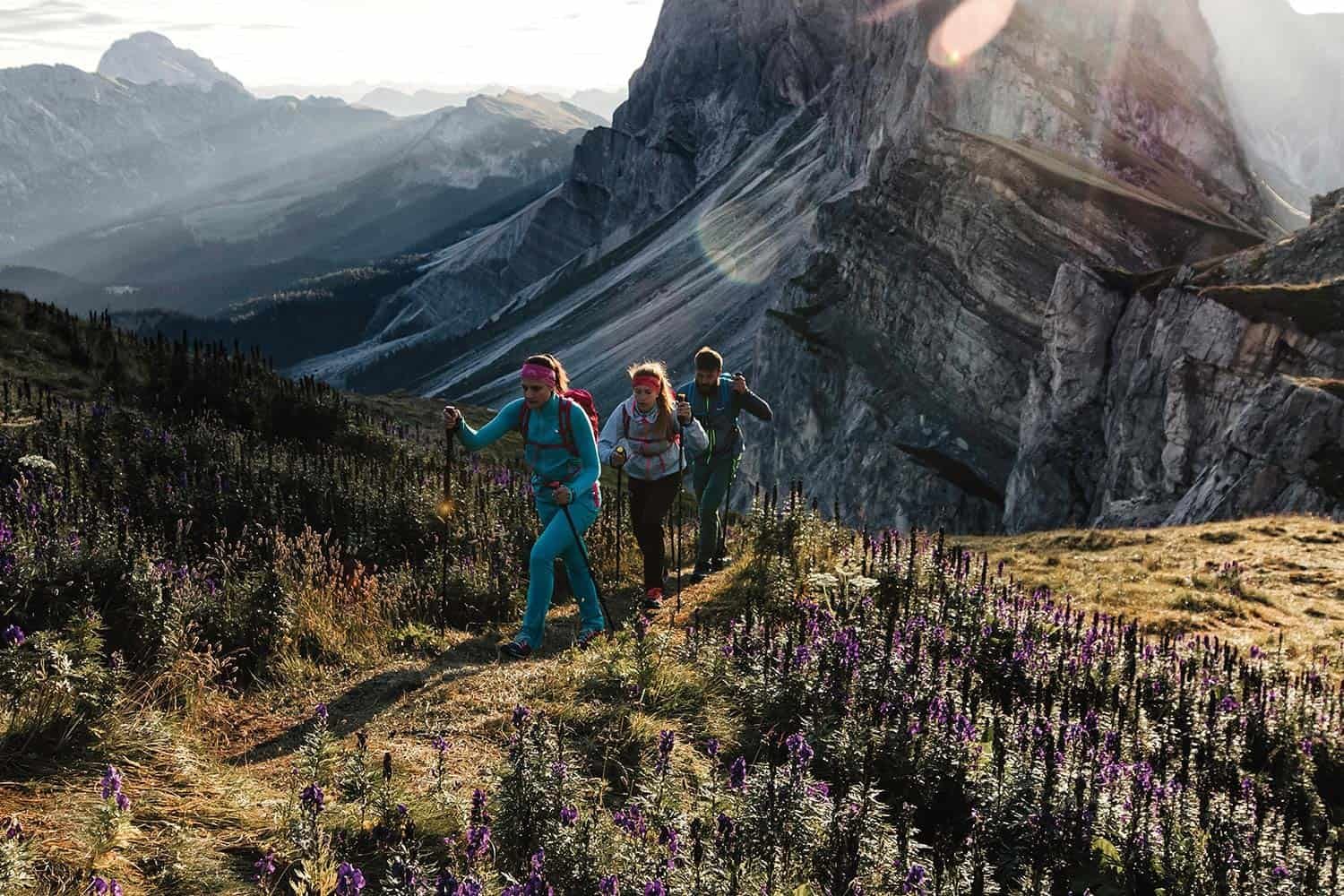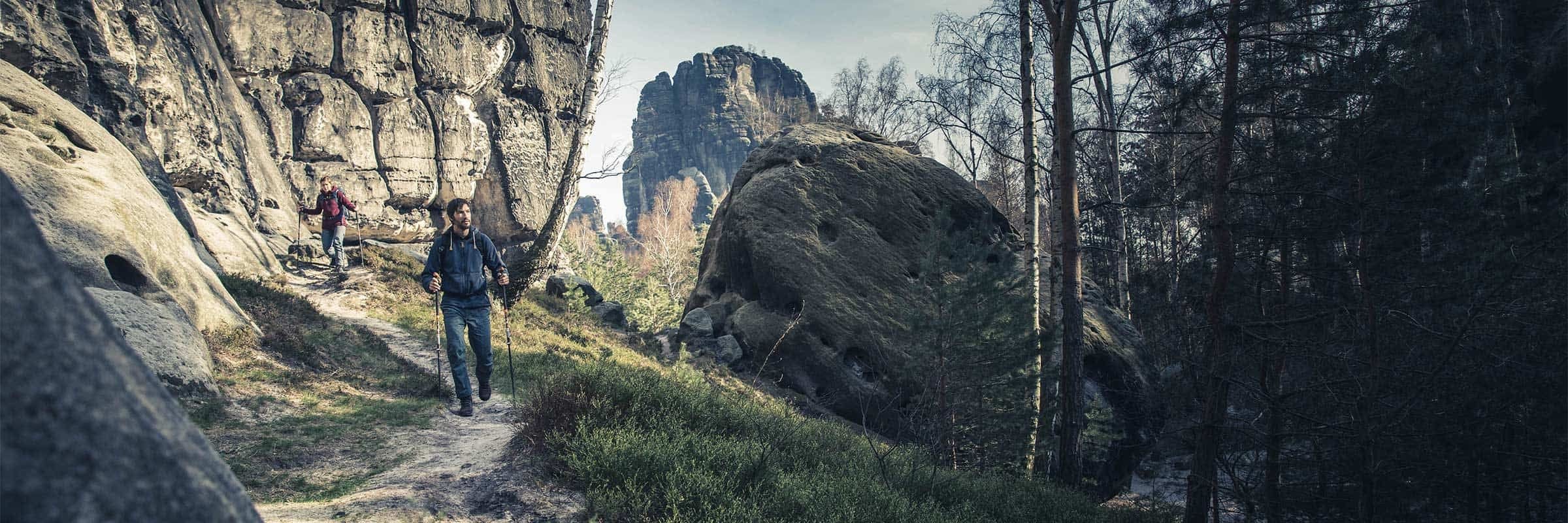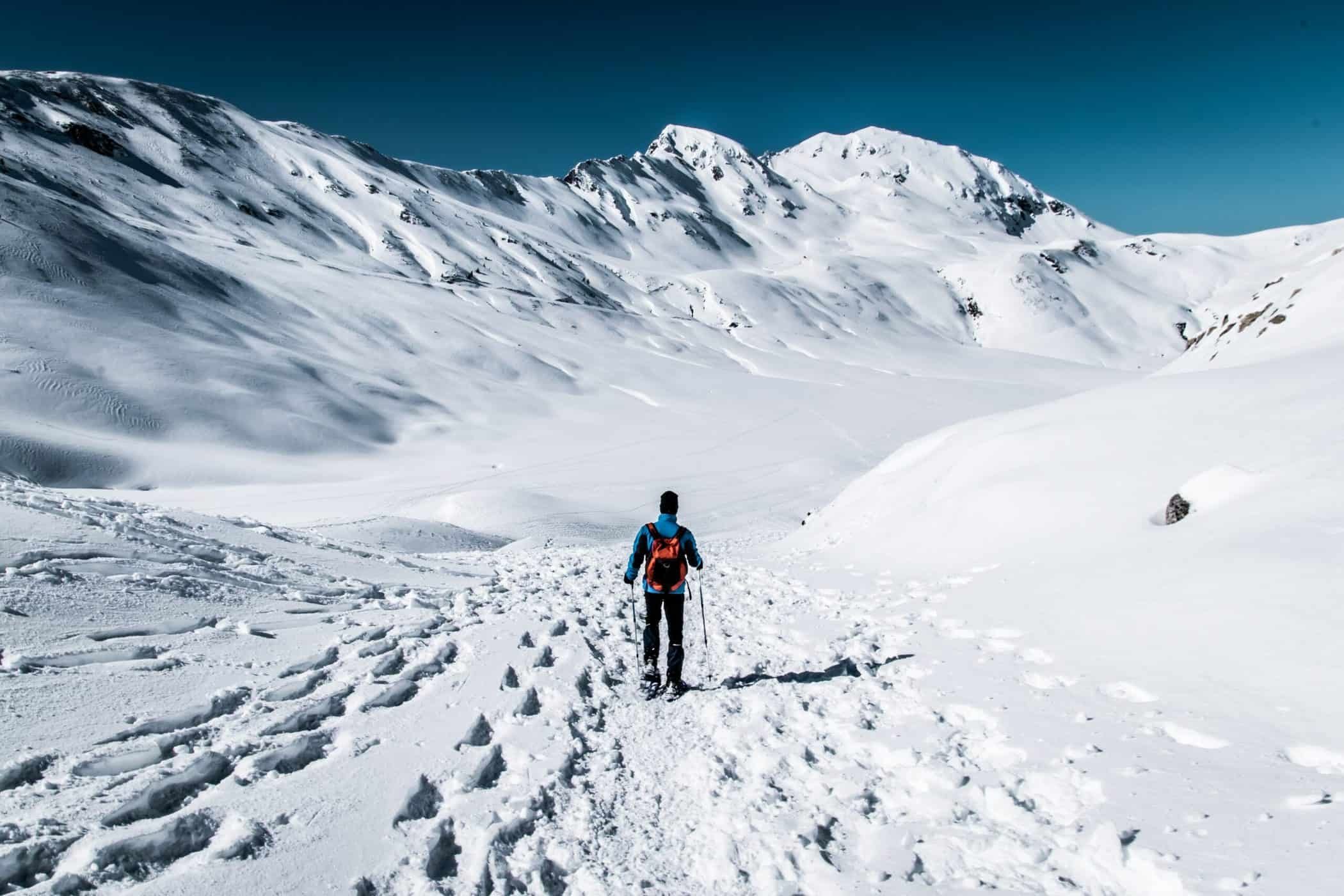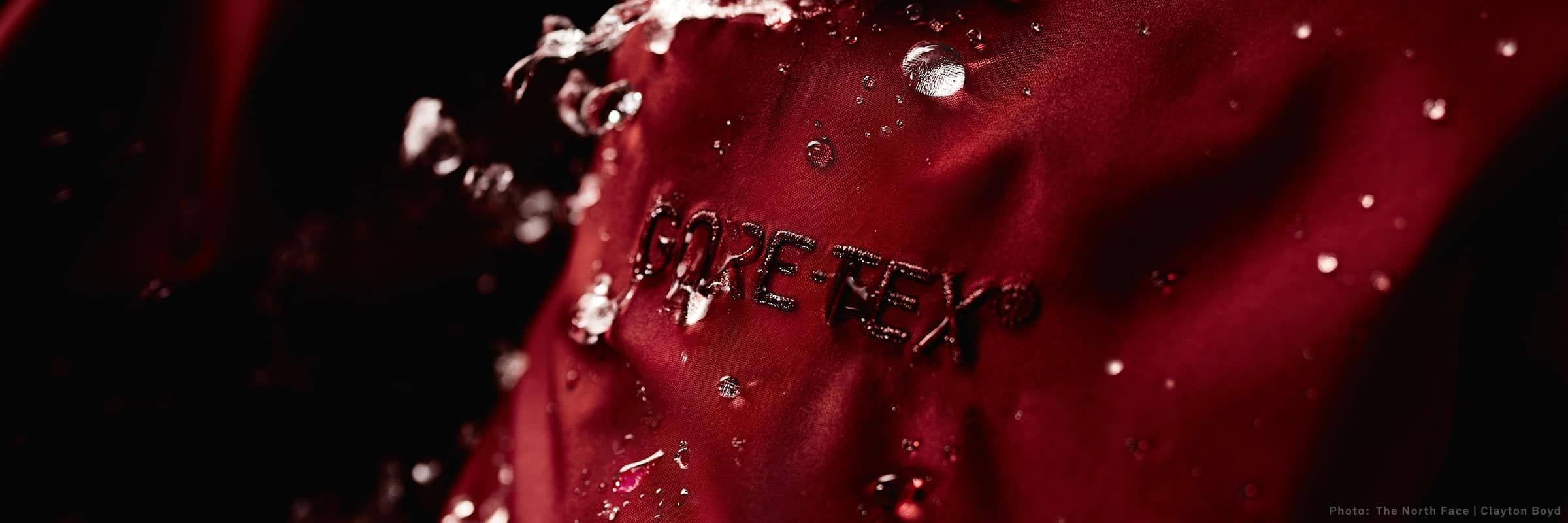Travelling to Zermatt by train is exciting, even on the back of a 24-hour blitz from Montreal to the heart of a remote region in the Alps. The North Face had invited a handful of people to a private event where we would experience the future – specifically, their revolutionary material set to disrupt the outdoor industry.
The spectacular scenery made the long journey well worth it. Finally, the Matterhorn appeared, towering over the distant peaks in the morning light of late November.
Nestled halfway up the Matter Valley, Zermatt is historical and yet forward-looking in its approach to mountain living. The village feels like you’ve travelled back in time but with modern amenities. Many of the century-old chalets made of age-blackened birch and stone now feature futuristic interiors. No gas-combustible cars are allowed in the village. Cobblestone streets feature tiny electric vehicles, and patrons in the latest gear commute on foot or bike to the nearby gondola, skis on their shoulders.

The North Face has a similar DNA to Zermatt. Their tent designs from decades ago are still used at Everest’s basecamp while climbers scale peaks in new renditions of Summit Series parkas. Even their logo is a stylized version of Yosemite’s famous Half Dome – an homage to climbing. From 1966 to today, they have defined modern gear and apparel.
The only thing I knew about their mystery material was anecdotal. Global Head of Mountain Sports Scott Mellin and athlete Andres Marin wondered about a ‘living’ layer – a single layer for mountain adventures. Something that breathed on the way up and shielded on the way down. A layer to eliminate heavy backpacks bursting with garments.
Enter Futurelight. The development phase lasted several years and involved athletes at every step. From the highest peaks to slushy ski touring, the fabric was secretly field-tested. I was here to try it for myself, and learn how this potentially revolutionary design was going to turn the outdoor clothing industry on its head.

First Take
The North Face dome tents and banners in the plaza outside the Hotel Alex heralded our morning get-together. Jetlagged but eager, I found my room where a burst of yellow gave me an adrenaline shot. Laid out was my new Futurelight outerwear.
I was immediately impressed by how light and crisp it felt without crinkling. The garments had a true matte finish, not shiny. They were softer than typical hardshells but with more stretch. I slipped on the pants, draped the jacket over my arm and headed to the lobby.
The rest of the invitees were in the foyer, fully dressed in their Futurelight. I thought they’d be sweating, but on the contrary, everyone was buzzing about how comfortable they felt. I put my own jacket on, and didn’t feel overheated despite being indoors.
As The North Face crew arrived, we stepped outside and I braced for a chill, but the material protected us from the crisp wind. Remarkable – but the real test was the Via Ferrata down the Valley.
Via Ferrata With Mathis Dumas
The North Face’s Mathis Dumas – ambassador, photographer, and outdoorsman – was our guide for Via Ferrata. Mathis is typical of European Alps adventurers – in a single afternoon, he’ll iceclimb a frozen waterfall, get in a Delta plane, and parachute to a ski slope below, snapping photos the entire way. He was the perfect coach for a group of novices being introduced to this storied style of Swiss mountaineering.
The plan was to scale down a frozen waterfall, traverse through a crevasse on plank bridges into a grotto, then climb back up. Mathis led the way, ensuring everyone was harnessed and confident.

Despite being safely roped, Via Ferrata was still unnerving. At one point, I stopped and peered below at the turquoise river racing along the steep cavern. My heart was pounding, but I felt the spiritual heart of mountaineering. I was partaking in an activity that was used to settle Zermatt.
The Futurelight material allowed me to move freely while reaching for holds on the ice wall. I paused after crossing a narrow bridge and felt comfortably warm, dry, and fresh despite the strenuousness of the climb.

That night, while chatting with The North Face athlete Jim Morrison, I learned that on his recent ascent and ski-descent of Lhotse (Everest’s neighbor and the world’s fourth-highest peak), he wore Futurelight. He claimed it passed testing with flying colours.
Another cool aspect of this trip was you could be talking to someone and not realize they were an elite alpine athlete. There was no ego, just people with genuine passion. While the Via Ferrata with Mathis was tough, it pales in comparison to Jim’s testing.
Skiing Zermatt With Marion Haerty
The next morning I wanted to get onto the mountain for the chance to ski wearing my Futurelight kit. In the hotel we met World Freeride Champion Snowboarder Marion Haerty, who was getting ready to do the same.
The gondola ride up to the resort featured epic views of the valley and surrounding mountains. With the Matterhorn approaching, I chatted with Marion about her life as a pro snowboarder. The gondola was somewhat of a pinch-me moment – on my way to ride the Alps while hanging with a world-class athlete – decked out in Futurelight, which wasn’t for release until the following autumn.

Even in overcast weather, the views from the top of Zermatt were breathtaking. Above-average early season snowfall saw the resort in excellent condition. We shredded some steep groomers to warm up our legs, and I found myself trying to keep up with Marion.
As we traversed along a ridge defining the Swiss and Italian border, I felt the altitude in my lungs and crisp alpine air against my cheeks. On the lifts, I felt dry and comfortable with only a light insulator under my shell for warmth. The accessible terrain was immense, and the scenery looked like a different world compared to the cavern with Mathis the day before.

As the day wore on, the visibility worsened, and we decided to turn our day into a food-and-ski tour. The fun of Zermatt is choosing which country to ski into. The Italian side has pasta and calzone restaurants. On the Swiss side, you can stop at a cafe for chocolate fondue or feast on luxurious cheeses. Not once during the day did I feel hungry or cold.
That night we gathered for a BBQ, rubbing shoulders with The North Face executives and athletes. A discussion I had with one executive turned to the manufacturing center where Futurelight was developed. I learned the facility primarily uses solar energy and recycled materials, and employees can even grow food there. The North Face calls it sustainable, eco-driven manufacturing.

The weather changes quickly in Zermatt, and different elevations wreak havoc on wardrobe decisions. As the night chilled, I pulled on my new bright yellow shell. The rest of the evening was focused on socializing – sometimes the best part of travel. I continued to chat, eat, and drink with Mathis, Marion, Jim and others while sharing adventure stories – past, present, and future.
Dawn In The Alps
Dawn in Zermatt was like a perfectly still lake. I strolled through hushed streets. A child skated alone on a floodlit hockey rink ringed with blackened lodge-like homes. My Futurelight made almost no sound as I wandered for breakfast.
Zermatt is different than any resort I’ve been to in terms of accessibility, environmental footprint, and architecture. Both the town and The North Face fuse the past seamlessly with the future, always with a deep respect for the outdoors. They’ve found their places in it. I think I’ve found mine too.

The North Face |

The North Face |

The North Face |

The North Face |
Share on








